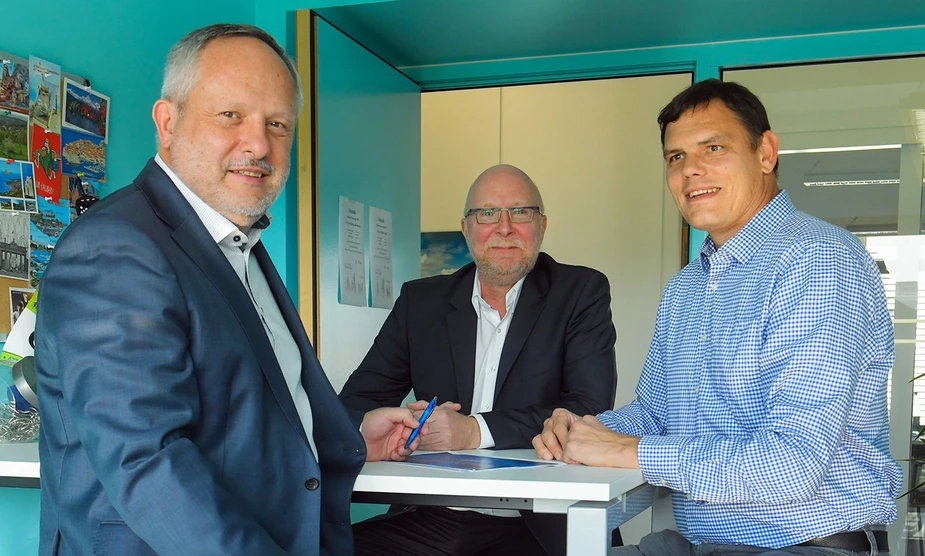BIM creates inventions
Searching for skilled personnel, the company vinarIT is focusing on older staff
vinarIT GmbH integrates IT systems for planning, implementing, and operating large infrastructure projects. The company needs staff who are skilled in construction technology as well as IT. A rare combination. The situation is escalating due to regulation that requires the use of building information modelling (BIM) for every public construction project as of 2020. Consequently, the Adlershof-based company is rethinking its strategy.
Michael Zylla has lived through many transitions. Since 2010, he is not only an IT consultant in the quattron group but also a business founder. “More and more customers in traffic and infrastructure are asking us about IT solutions for dealing with construction projects,” he says. The result of this high demand was the decision to spin off a solutions-focused IT consulting company: vinarIT GmbH.
Three years after its founding, the company moved to Adlershof, where Zylla now works with eleven highly specialised IT and construction experts. They develop software for the planning, construction and operation of infrastructure projects with a focus on railway. “Our task is to develop and manage plans and efficient tools for sharing them with public authorities as well as creating ways to safeguard revision-proof documents,” explains Zylla. The construction and operation of track systems and signalling also requires IT tools for documenting decisions, responsibilities, maintenance processes, and their authorised implementation. The company focuses on large-scale projects. Currently, vinarIT is providing solutions for the digitisation of the railroad system.
The company is currently setting up sensors at 65,000 switch points on 36,000 kilometres of the German railway system. The train route Rotterdam-Genua (the Rhine-Alpine Corridor) is being equipped with ETCS, a uniform European train control system; the work is done under the highest safety integrity level (SIL 4), which allows only one error in a billion actions.
Based on Microsoft technology, vinarIT provides such projects with software platforms, which are tailored to every project’s specific requirements. To do this, the company needs very specific know-how. “We are looking for employees who have IT skills and construction expertise,” says Zylla. This is not an easy task – and it is not getting easier. Regulation will soon require using a new digital method, building information modelling (BIM), for planning and operating public construction projects. For each project, BIM creates a digital twin that simulates the building’s life cycle from planning to demolition. The consistent introduction of digital data models will replace today’s rank growth of data formats and ever-changing paper plans. Each subsection of the project enters its digital data. When there are no conflicts left in the model, construction can begin. The models are continuously updated. “According to the BIM model of the federal government, all public construction projects will be planned using BIM as of 2020,” says Zylla. Every public tender will require BIM. Consequently, all levels of government, including municipal, county, state-level and federal level governments, will require skilled staff who know their way around the new method. These skilled workers are already rare. “Universities are not producing enough graduates in construction IT,” he says, warningly.
Many companies like vinarIT need those skilled workers now. As a company focused on infrastructure, vinarIT’s task is also to adjust BIM methodology to construction projects in that particular field. To do so, Zylla’s team is cooperating with other partners, for example, the Gießen-based 5D-Institute for Integral Planning and Construction. Preparation for BIM is handled alongside the company’s everyday tasks and projects. “If we want to keep up with the work, we really need backup,” he says. Many had hoped that Berlin’s diverse university landscape would facilitate finding young and high-skilled applicants but it has not been working out. The competition for affordable IT experts is so great that small and medium-sized companies can hardly keep up. Against this backdrop, Zylla had to think outside the box to get skilled staff. He now has three new employees who are indeed highly-skilled – but not young anymore. They are all over 50 and returning to their jobs after a hiatus. The job centre is supporting the intensive initial training. Zylla is glad that his approach was successful: “We can now manage to do our jobs and attendance at our foosball table is still high despite higher age average.”
By Peter Trechow for Adlershof Journal
